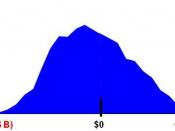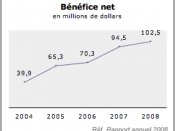Content1. Introduction2. Company Background3. Profitability & Return On Capital3.1 Gross Profit Margin and Net Profit Margin3.2 Return On Equity (ROE) and Return On Capital Employed (ROCE)3.3 Asset Turnover4. Liquidity & Working Capital4.1 Current Ratio4.2 Quick Ratio4.3 Payables Payment Period4.4 Receivables Collecting Period4.5 Inventory Turnover Ratio5. Long- term Solvency5.1 Debt/Equity Ratio5.2 Gearing Ratio5.3 Interest Cover6. Shareholders' Investment6.1 Earning Yield6.2 Price- Earnings Ratio6.3 Dividend Cover6.4 Dividend Yield7. Trend Analysis7.1 Return On Equity (ROE) Ratio7.2 Net Profit Margin7.3 Total Asset8. Post Balance Event9. Group Reflective10. Bibliography11. Appendix1. IntroductionThe purpose of writing this report is to analyse financial performances of InterContinental Hotels Group (IHG) for potential investors. The results are calculated by using ratio model from the Financial Statement, Balance Sheet and Cash Flow of IHG in 2006 and 2007. The significance of the accounting figures can only be established through comparisons with competitors. In this report, Millennium & Copthorine Hotels Plc has been chosen as the competitor for IHG to provide investors information about its performance and financial position.
It has been chosen because they are in the same industry and amongst the same size.
2. Company BackgroundIHG is a global hotel company and is known as a hotel with the largest number of rooms. The Group has more than 3900 owned, leased, managed and franchised hotels and approximately 585,000 rooms in more than 100 countries around the world. IHG focus on branding, managing and franchising strength and this group will continue to drive return on capital employed and shareholder returns. The strategy is continue to reduce capital by selling the real estate assets of the majority of its hotel portfolio while retaining management or franchise agreement and they return excess funds to shareholders or reinvest in growth opportunities, while maintaining appropriate efficient debt levels.
3. Profitability & Return On Capital Profitability &...


